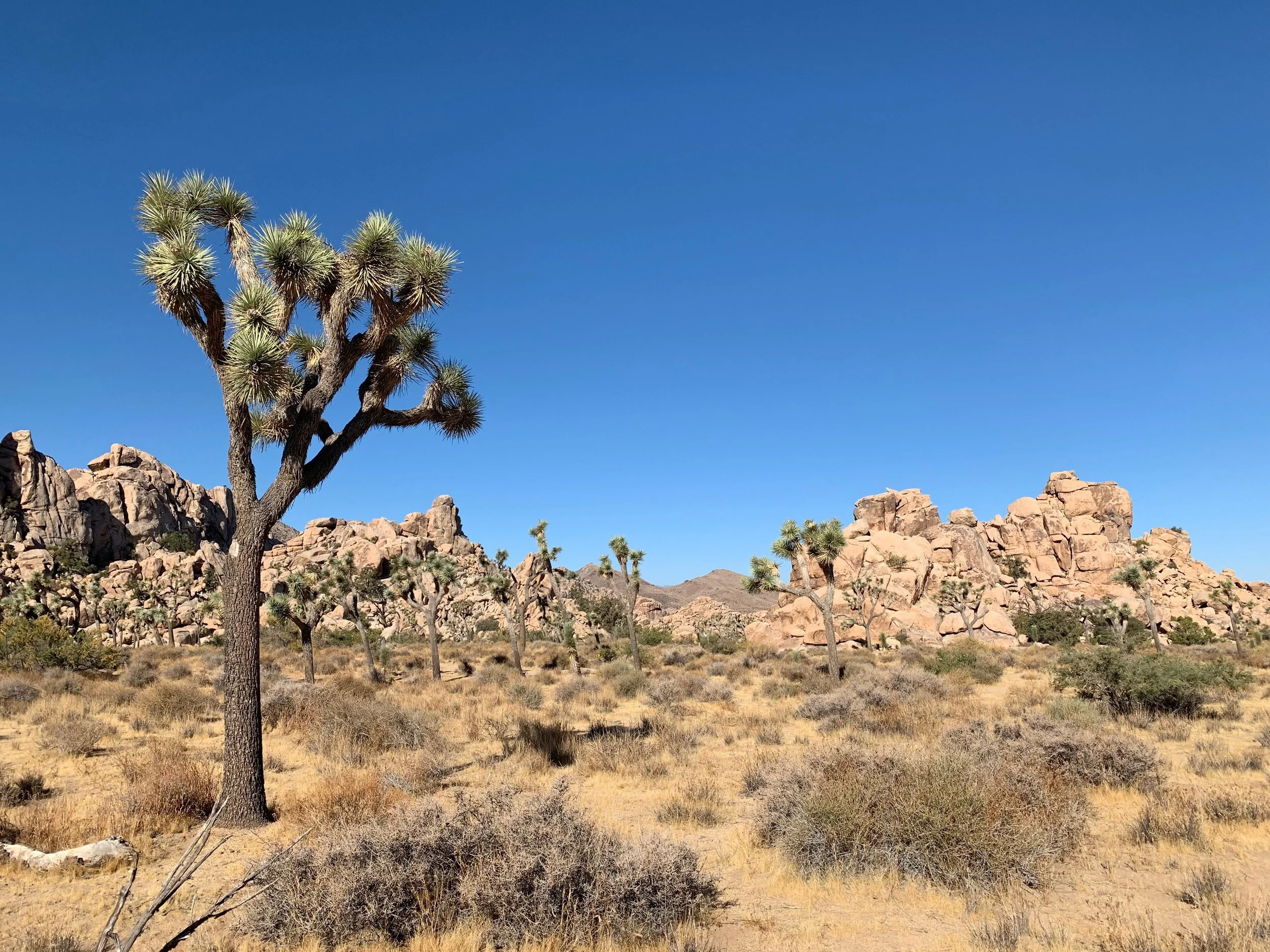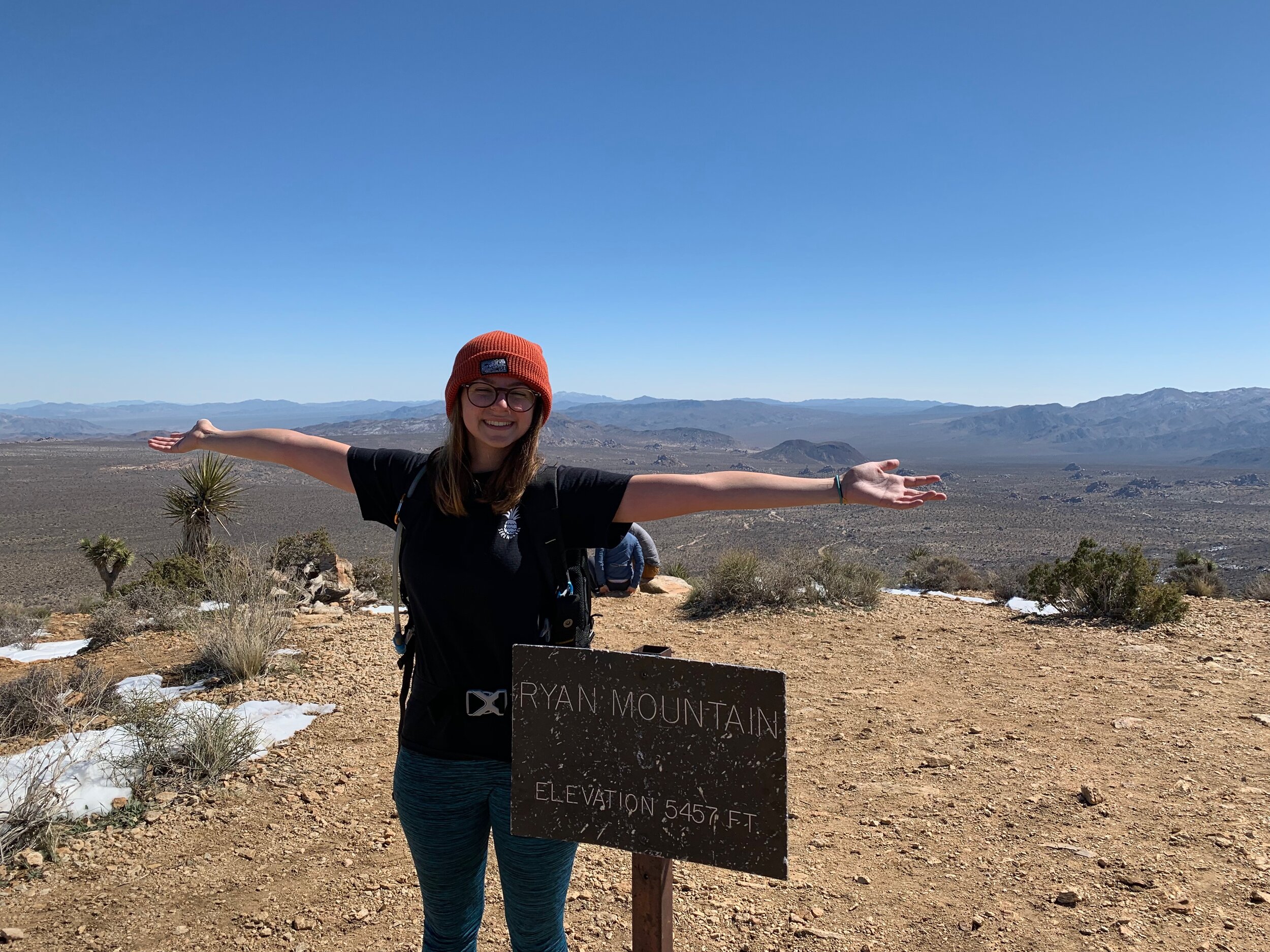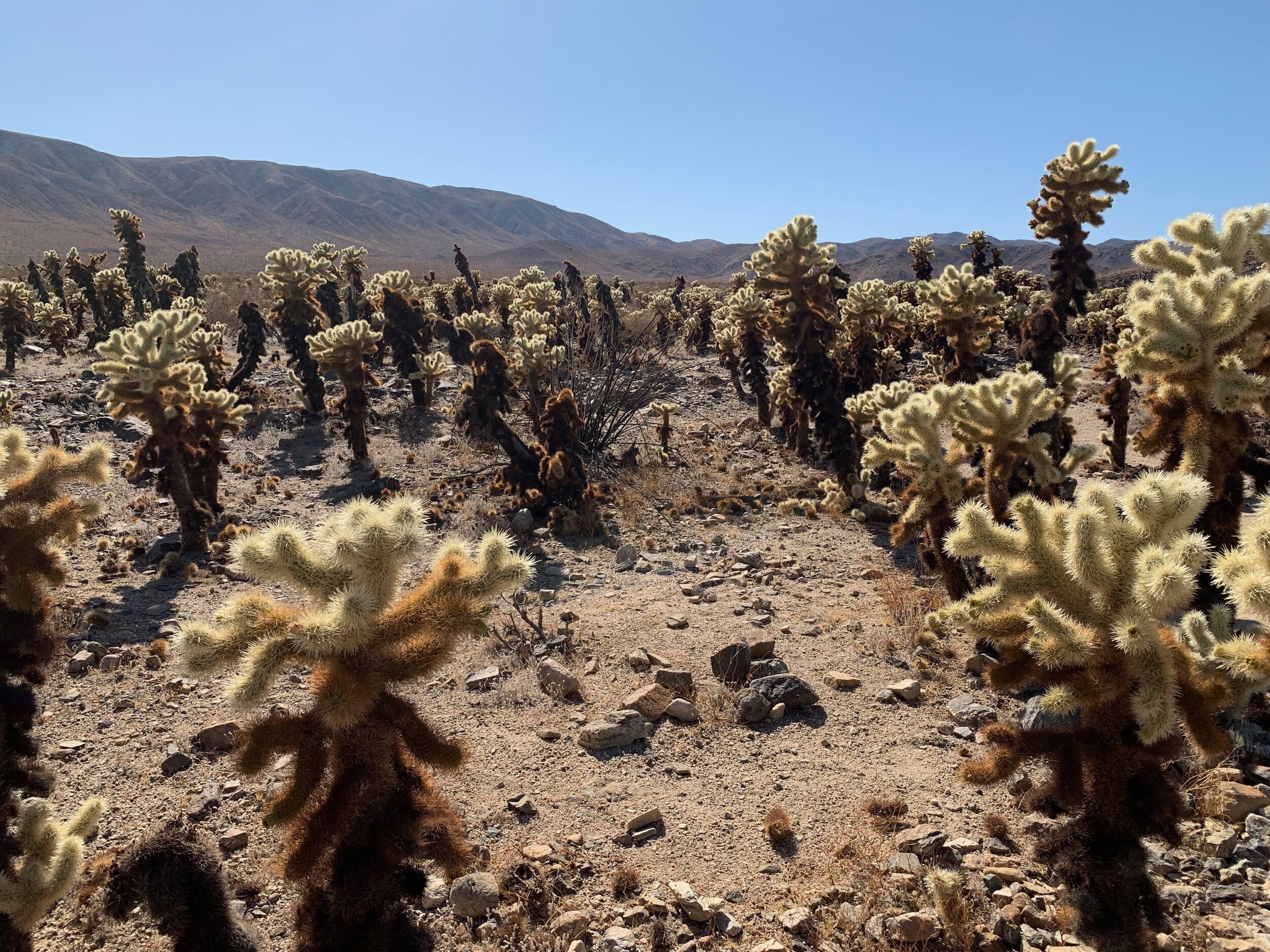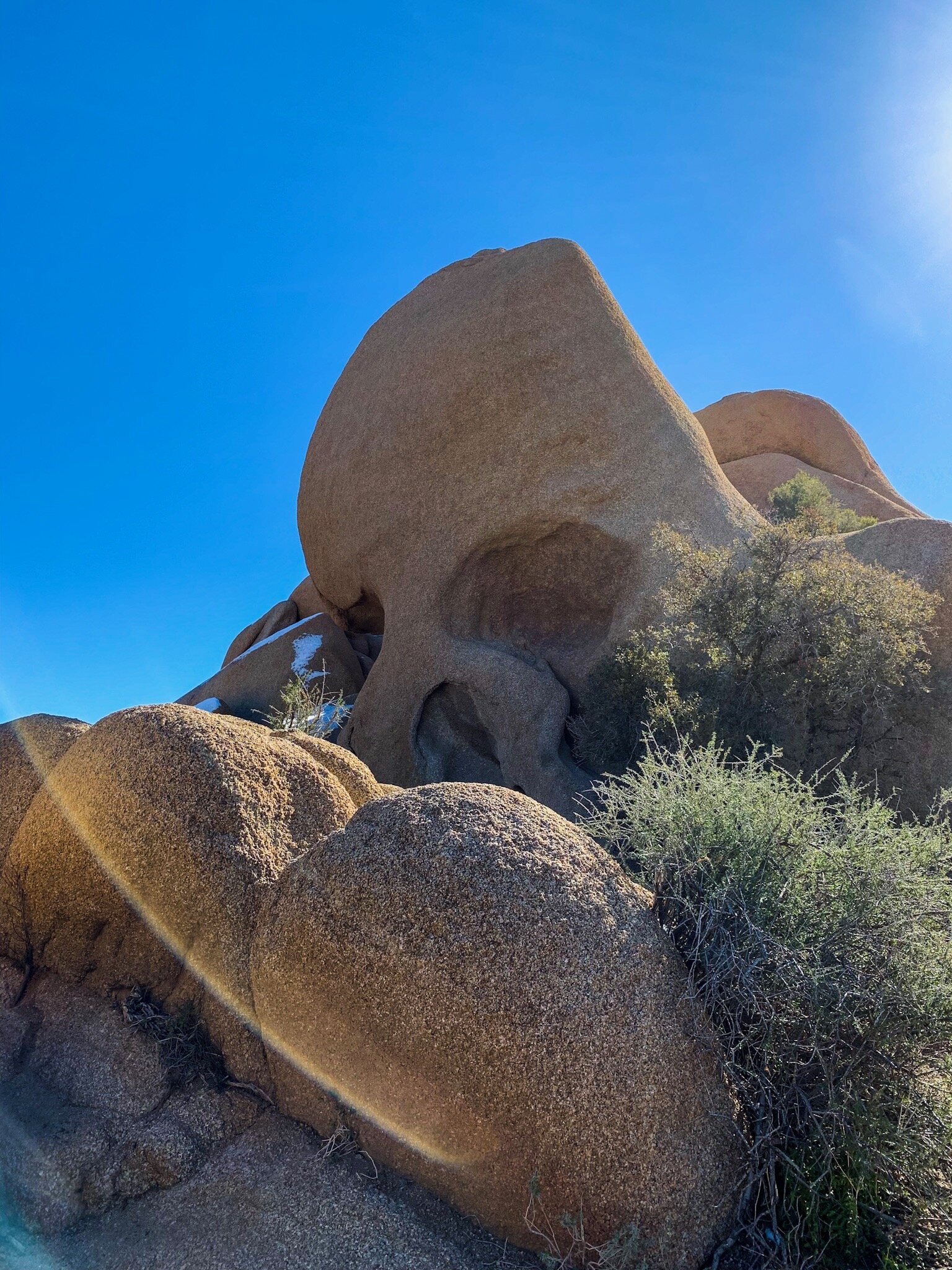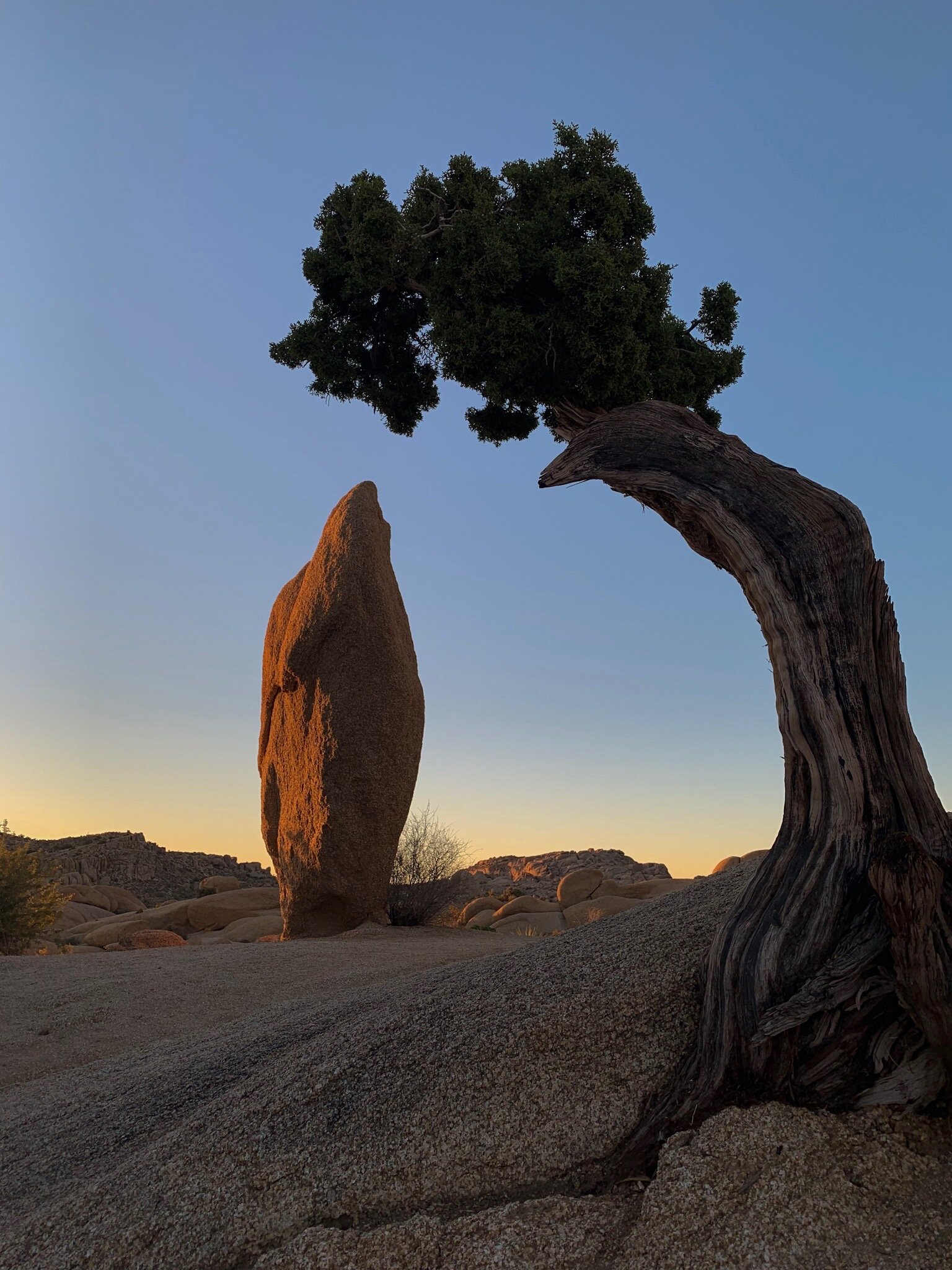Local visitors and out of town tourists alike are drawn to this mysterious place hiding out in Southern California’s desert for many reasons. Whether it’s trees that look like they’re straight out of The Lorax, rocks just begging to be scrambled and climbed on, or the Milky Way waiting to come out of hiding in this designated dark sky zone, Joshua Tree National Park truly has something for every type of traveler, from the hiker to the artist.
Joshua Tree is the park that I’ve spent the most time in so far. Part of the reason for that was its proximity to my old university, but even after graduating, I still find myself pining for the dry, expansive landscape of the California desert more often than I’d expect, considering I’m such a lover of mountains. Joshua Tree truly comes with a certain type of desert magic, and it’s something you definitely shouldn’t miss during your next trip to California.
Hemingway, Joshua Tree National Park, CA
So… where exactly is Joshua Tree?
Joshua Tree is located between Yucca Valley, CA and Twentynine Palms, CA, and is about an hour from the Inland Empire. It’s nearly exactly halfway between Los Angeles and San Diego, if you draw a triangle between the three, Joshua Tree being the most inland. Joshua Tree is also located nearby other famous California road trip destinations, such as the Coachella Valley, the Salton Sea, and Salvation Mountain.
What is a designated dark sky zone?
There are only a few spots in the US that are considered “designated dark sky zones,” Joshua Tree being one of the most famous, but what makes them different from other areas where there’s simply low light pollution?
Well, the basic idea is that it’s really low light pollution, and it’s protected land. So, these areas are specifically set aside in a way that ensures that light pollution like we have in many major cities can’t reach them, allowing for incredibly dark nights, and incredibly clear stars. Many people have their first views of the Milky Way while staying in Joshua Tree National Park, and photographers love playing with light here: the contrast between the strange silhouette of the Joshua Tree and the bright stars up above creating dream-like landscapes one usually only finds in children’s books.
Joshua Trees off the side of the road near the Yucca Valley park entrance
Hiking Joshua Tree
If you’re a hiker, like myself, it’s important that you visit Joshua Tree prepared for a couple things: most of their trails are fairly flat, it’s easy to get lost, and there’s no potable water in the park. While there are marked trails, no one will yell at you for going off trail here to explore, as long as you don’t damage the plants or rocks, but make sure you know your way back—most of this beautiful desert looks very similar!
Of their marked trails, there’s really only one that truly gains any elevation: Ryan Mountain. Ryan Mountain is an awesome hike with truly amazing views, but as there’s no potable water in the park, make sure you bring enough on your back if you’re there in the hot season.
That feeling you get when you summit Ryan Mountain and there’s still snow on the ground
There are other flat trails in the park as well, and plenty of rock scrambles to climb if you’re sick of just wandering through the desert! Some other notable trails include the Boy Scout Trail (16 miles out and back, or 8 miles one way) and the Cholla Cactus Garden trail (only .25 miles of family friendly trail through a spot where tons of cacti grow). Of course, there are plenty of other trails, out to old mines, abandoned ranches, and rock scrambles, so be safe, choose a trail right for your ability, and get hiking!
Cholla Cactus Garden, Joshua Tree National Park, CA
Sightseeing in Joshua Tree
If you’re not a hiker, there are tons of sites to see that don’t involve tons of energy exertion. These are also great places to stop if its too hot out to hike! Some favorite sites are Skull Rock, Oyster Bar, Hemingway, and Hall of Horrors.
While Hemingway and Hall of Horrors are known as rock climbing and scrambling spots, they’re still only a short walk from the parking lot, and feature cool rock formations to photograph. If you are looking to scramble though, Hemingway is more known for bouldering and climbing, while Hall of Horrors is full of fun rock scrambles and hidden caves.
Skull Rock, Joshua Tree National Park, CA
Camping in Joshua Tree
Joshua Tree is a super popular park, so if you’re going on a long weekend, or really any weekend except in the summer, my advice would be to get there early! I’ve personally camped in three of the park’s campgrounds: Jumbo Rocks, Belle, and Ryan. All three are beautiful and offer very different experiences! Ryan is definitely closest to the sites, but as Belle is a bit harder to find, it tends to be a bit quieter. Both are first come first served.
Most campgrounds in the park are first-come-first-served, but Jumbo Rocks is available for reservation, and is one of the most popular campgrounds in the park due to its proximity to, well… huge rocks! On top of that, it’s by far my favorite of the three I’ve stayed in. The rocks are perfect for late-night scrambling and provide fantastic views of the stars away from the noise and light down below. It’s also home to one of the most famous photography spots in the park (pictured below).
Go on a treasure hunt for this famous spot in Jumbo Rocks Campground
What to be prepared for…
Like I said earlier, there’s no water in the park, so bring at least one gallon per person per day, and more in the hot season. The last thing you want is to get dehydrated 40 miles away from the Yucca Valley entrance (the only place with potable and running water).
It’s also either incredibly hot or incredibly cold, so check the weather before your trip.
The park is also home to tons of wildlife, if you know where to look! I’ve spotted tarantulas, giant hawks, snakes, lizards, jackrabbits, and tons of mischievous chipmunks!
There is a $25 entrance fee at the gate as well, so if you plan on visiting more than 3 National Parks within the next year, I suggest purchasing the $80 Interagency Annual Pass or Lifetime Senior Pass (for adventurers ages 65+).
When’s the best time to go?
Personally, since I’m a winter girl, I’d say go in the cold season. While it does still get below freezing in the winter here, I’d rather have to use more blankets than sweat through my sleep. It starts getting hot around late April, and cools down starting around November, so anything in that winter season would be perfect in my book, as long as you bring enough firewood and warm clothes! It does snow in Joshua Tree if it gets cold enough, though, so check the weather, or the Joshua Tree official Instagram, and be prepared with chains if needed.
If you insist on going in the hot season, know that it’s not just hot, it’s incredibly hot. There’s next to no shade in J Tree land, and I’ve found myself climbing rocks to find caves to hide in during the heat of the day. In the hot season, the only time you’ll have for exploring is early morning and evening. For a summer visit, I’d suggest getting one of the nearby Air BnB’s instead of camping, so that you have some AC to escape to!
Joshua Tree in February is beautiful, but chilly!
Joshua Tree truly is a unique place to visit, and has amazing sites hidden around every bend. If you’ve never experienced the California desert, this is a great place to start. This is truly one of my favorite spots in California, and the National Park I’ve spent the most time in (and for good reason). Whether you simply want to take pictures with the cool trees, or insist on staying up late to stargaze, Joshua Tree will not disappoint, and its strange desert magic will keep you coming back again and again.
If you want to learn more about Joshua Tree and how you can fit it into a huge California road trip, check out my ebook: Exploring California’s Interior.
